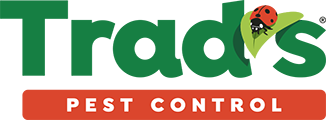Fleas, commonly associated with indoor pests, can also pose a threat to the health of your lawn and your pets. These tiny, blood-sucking insects can infest outdoor spaces and become a nuisance for homeowners and their furry companions. So, it’s important to understand what fleas are, how they are attracted to yards, the potential damage they can cause to landscaping, preventive measures, and effective methods for flea eradication is vital for maintaining a flea-free and healthy lawn.
What are Fleas?
Fleas are small, wingless insects that belong to the Siphonaptera order. They feed on the blood of warm-blooded animals, such as dogs, cats, rodents, and even humans. The most common flea species found in yards are the cat flea (Ctenocephalides felis) and the dog flea (Ctenocephalides canis). These pests are agile jumpers, allowing them to move effortlessly between hosts.
Why Fleas are Attracted to Yards
Fleas are drawn to yards primarily because of the presence of warm-blooded hosts, such as pets and wildlife. Adult fleas often lay their eggs in outdoor areas where hosts rest, such as in shady spots or underneath porches. Tall grass and vegetation can also provide suitable hiding places for fleas, protecting them from extreme temperatures and predators.
Damage to Landscaping
Fleas may not directly damage landscaping, but they can harm your lawn indirectly by infesting and causing discomfort to your pets. Irritation dogs and cats feel can lead to your pets digging and more. Plus, excessive scratching and biting due to flea infestations can lead to skin irritations and secondary infections in animals. Moreover, infestations in the yard can increase the risk of fleas entering your home and causing problems indoors.
Preventive Measures
If you think your yard is attractive to fleas (which it probably is), then preventing flea infestations in your lawn requires a combination of proactive measures, which you can do on your own with little time and effort:
- Perform regular lawn maintenance. Keep your lawn well-maintained by mowing the grass regularly and trimming overgrown vegetation. Fleas prefer shady areas, so maintaining a well-groomed yard can make it less attractive to them.
- Clear out debris. Remove any piles of debris, such as leaves, grass clippings, or wood, as these can provide hiding spots for fleas and other pests, as well.
- Routinely treat your pets. Implement year-round flea prevention for your pets using veterinarian-recommended flea control products. Preventing fleas on your pets will help reduce the risk of fleas infesting your lawn.
Also, you should monitor wildlife. If possible, discourage wildlife, such as stray cats and opossums, from entering your yard. They can carry fleas and contribute to future infestations.
Getting Rid of Fleas from Your Lawn
If your lawn becomes infested with fleas, it’s essential to take immediate action to eradicate them effectively because they will only become a bigger problem the longer they are allowed to linger. Here are some things you can use to help get rid of fleas in your yard:
- Apply insecticides. Use insecticides specifically designed for outdoor flea control. Apply the product to the affected areas of your lawn, focusing on shady spots and areas frequented by pets.
- Introduce nematodes. Beneficial nematodes are microscopic worms that can help control flea populations in the soil. These nematodes infect flea larvae and prevent them from maturing.
- Hire a professional pest control service. For severe infestations or if you are unsure how to handle the situation, consider contacting a professional pest control service with experience in flea extermination.
In addition, keep up your yard cleaning. Regularly clean and vacuum pet bedding and outdoor furniture. This helps reduce the number of fleas in the vicinity and prevents re-infestation.
The Summation
Flea infestations in your lawn can be a frustrating and uncomfortable experience for both pets and homeowners. Understanding the attraction of fleas to yards, the potential damage they can cause to landscaping, and implementing preventive measures is crucial to keeping your lawn flea-free.
If an infestation occurs, act promptly with appropriate insecticides, nematodes, or professional assistance to eliminate the fleas effectively. By maintaining a well-groomed yard and addressing any flea-related issues promptly, you can create a safe and enjoyable outdoor environment for everyone in your home.

